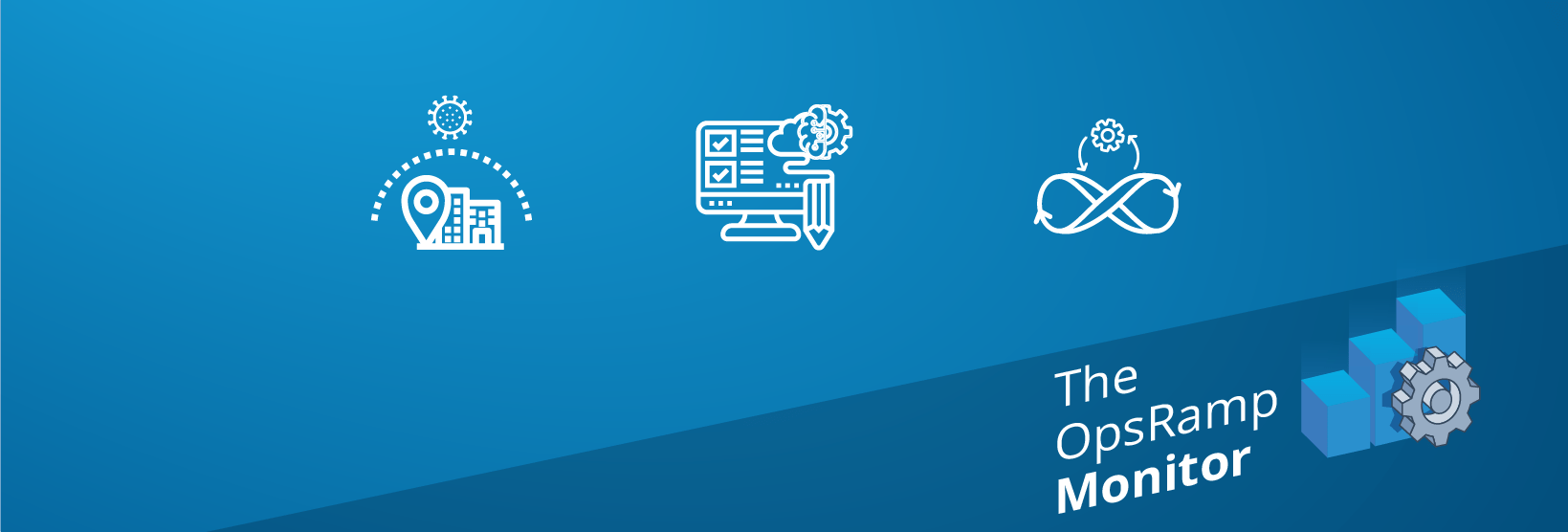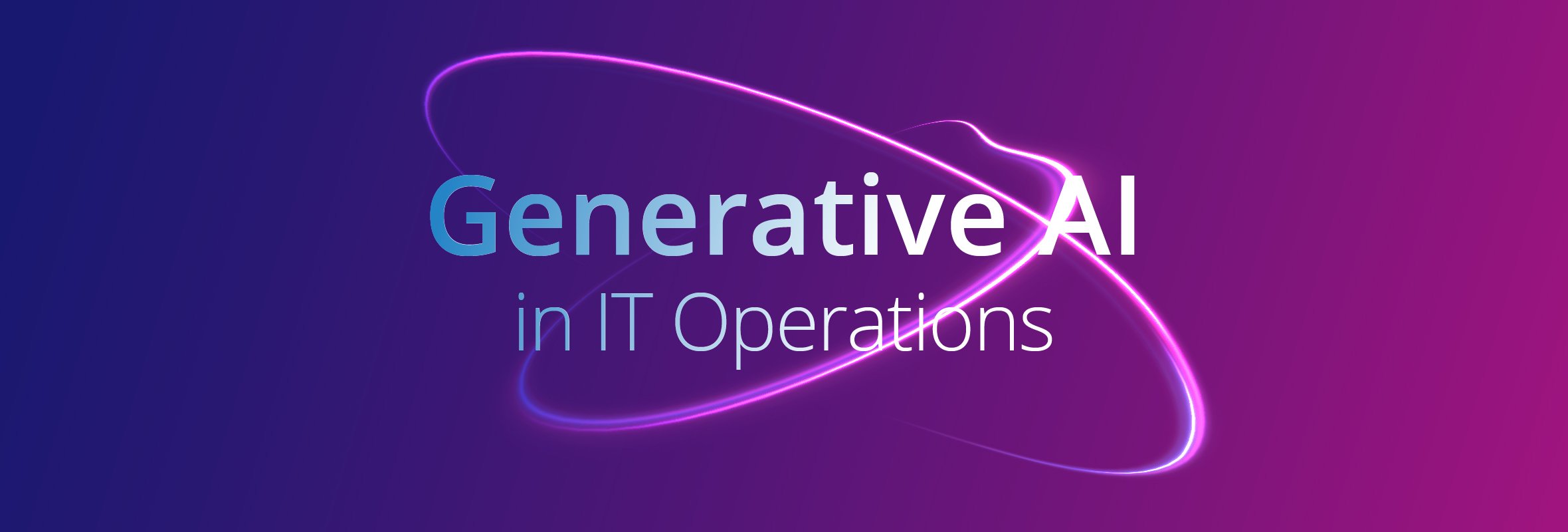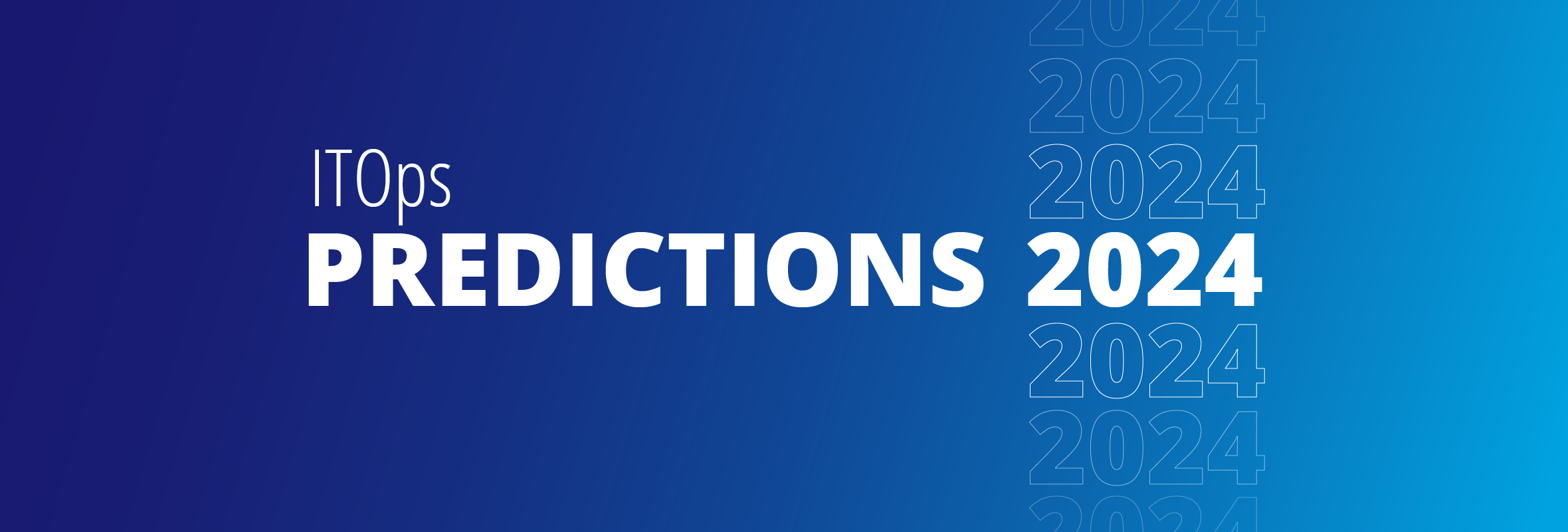Top Reads in IT I&O
The world of IT operations management, DevOps, AIOps, and cloud is always changing. That’s why there’s The OpsRamp Monitor: the occasional review of interesting developments and emerging trends in digital operations.
In this article:
- What Covid-19 could mean for Big Tech
- Surveys show growing interest in AIOps
- The pros and cons of DevOps-as-a-Service
As Covid-19 restrictions and predictions march on unabatedly, people are starting to think about what may be long-lasting changes to industries. The tech industry is a mixed bag: it all depends on your perspective. Layoffs are becoming commonplace, especially in BtoC tech startups: Lyft and AirBnB recently announced massive cuts. The giants-- which include the usual suspects Amazon, Microsoft, Facebook, Google, Apple, Netflix--are faring remarkably well, as discussed in a recent New York Times op-ed.
Yet the future of big tech is also unclear. Columnist Margaret O’Hara goes back in time to the birth of the auto industry, implying that tech may be in for a new era of regulation–which is never a positive trend for innovation: “The regulatory and antitrust standards developed for the industrial age are not enough to protect competition and consumer rights in the digital age, and this crisis is forcing policymakers to confront that.” The economy needs a healthy startup ecosystem, despite the near-term struggles many young companies are facing today.
Wherefore goes cloud? Large-company dominance isn't always evil, however, especially when we're talking about the top three cloud providers. Their success fuels the success of many SMB software and services companies today. As well, cloud computing is a proven way for companies to optimize IT spending with flexible, scalable infrastructure. CIO Dive reported that the big three surged forward, despite or even because of Covid-19: AWS was up 33% year-over-year, reporting $10.2 billion in net sales in Q1 2020; Microsoft Azure grew 59% year-over-year; and Google Cloud, which includes Google Cloud Platform and G Suite, reported Q1 revenue of $2.8 billion, up 52% year-over-year.
The year of AIOps. Another IT sector which may get a boost this year is AIOps. This is because AI features in IT infrastructure monitoring and incident management tools can help reduce considerable manual effort spent filtering and analyzing alerts, along with helping IT people discover root causes faster. That’s time and money back to the business. A recent study on AIOps from Digital Enterprise Journal (DEJ), found an 83% increase in the number of organizations deploying or looking to deploy AIOps since 2018. The study also reported that organizations spend an average of $1.27 million annually on incident escalations which could be avoided with the help of AI. OpsRamp’s latest survey on IT priorities found a similar uptick in interest, with AIOps coming up as the leading category of interest among performance monitoring tools.
DevOps people like security. All right, it’s time to give developer types a bit of a break on the myth that they really don’t care much about things like performance and security, only releasing code. The DevSecOps community survey, from Sonatype, gathered results globally from more than 5,000 DevOps-oriented people. Participants who identify themselves as having “mature DevOps practices” integrate security into their DevOps pipelines more than twice as frequently as do immature DevOps shops. The survey also found that developers were most happy working in organizations with mature DevOps practices. And interestingly, “happy developers” are 3.6 times more likely to pay attention to security. This is fabulous news for CSOs and CIOs who need to assure their executive teams that they are running a tight ship. So here’s the formula: invest in DevOps=happier developers=more secure code.
DevOps-as-a-Service. Developers love an abundance of tools but whomever has to manage, integrate and secure all these tools doesn’t always have a lovely job. As a result, we have something called DaaS, or DevOps-as-a-Service, a “managed cloud-based service that provides a unified DevOps toolchain,” as described in this DevOps.com article. Check it out to learn about the pros and cons of DaaS. On the positive side, DaaS gives organizations access to “dedicated DevOps engineers” for support and expertise including the ability to customize tools for your organization and industry. On the downside, you are now relying on a third party for access to those critical CI/CD capabilities and that can create reliability and security risks. “DevOps teams still need to understand the tools being implemented and the basics of how to manage and use those tools,” the author adds.
The problem with data in multiple clouds. It’s nice to know that you don’t need to settle for a one-size-fits-all strategy when managing data sets with different requirements in the cloud. Because that’s just not reasonable if you’ve got certain apps which have extremely low latency requirements (aka DoorDash ordering systems on a Friday night), and others which simply need a large volume of economic storage space. This DevOps.com article relays considerations for hosting data on different clouds: “If you’re not doing a full mirror of your data between each cloud, it’s critical you remain acutely aware of what data lives where. You’ll want to consider creating extensive documentation and diagrams of what data lives in which cloud. If you are replicating data between clouds, you also have to justify the additional operating and engineering cost to accomplish your goal.”






